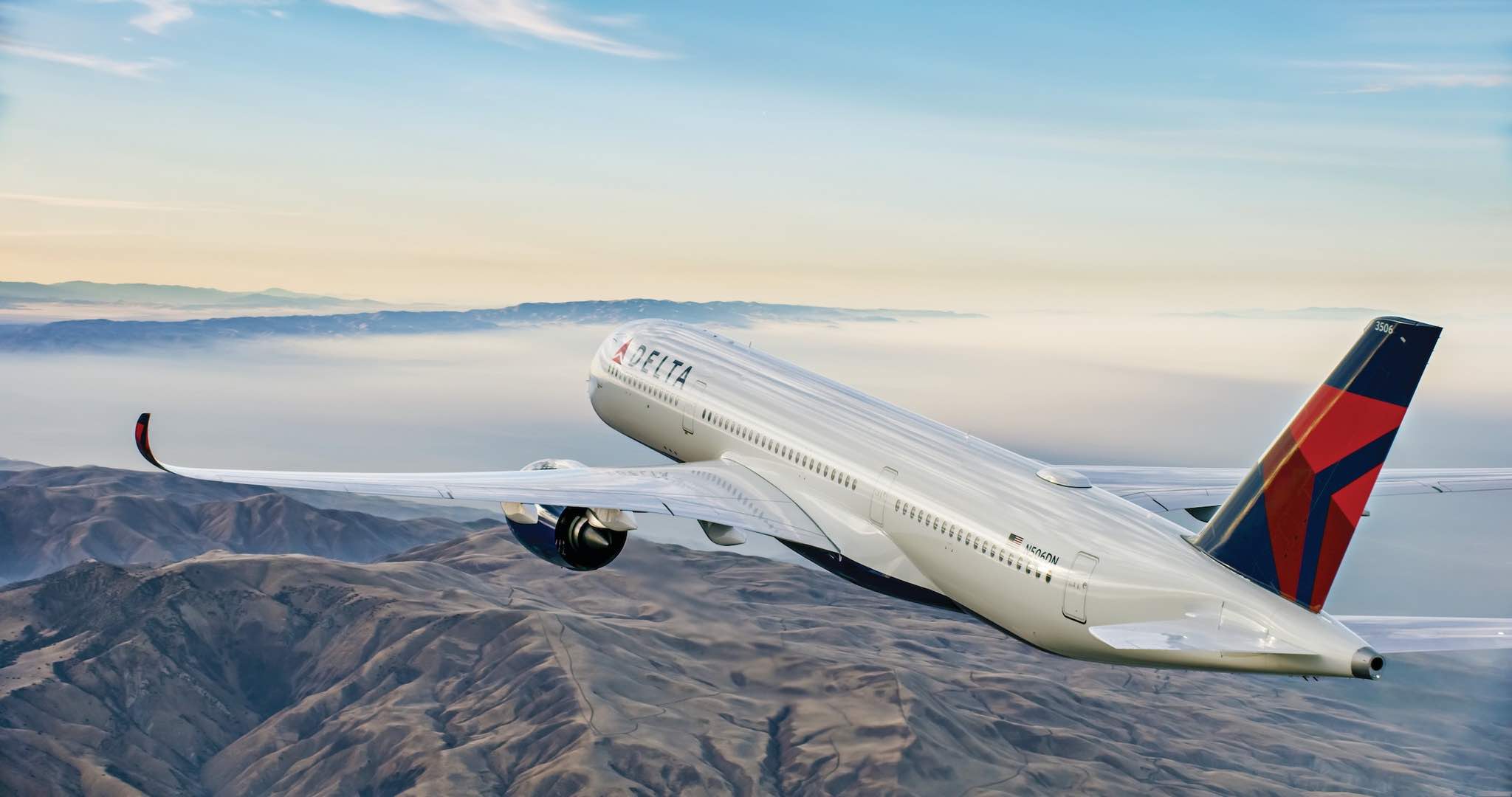
Delta says Europe was its weakest region this summer. At first glance, that is surprising given crowded flights, but the details explain why.
Delta Says Europe Was Its Weakest Summer Region, Here Is Why
Speaking at a Morgan Stanley event earlier this week, Delta President Glen Hauenstein said:
“We have noticed that July and August are not the peak months for high-end leisure into Europe that we saw in 2022 and 2023. Our conclusion is that the travel season is extending longer, with September, October and, we think, even into November performing equally to or outperforming months like July and August in the future. Delta’s weakest performing entity this summer was transatlantic when you look at it in consolidation. It was driven by main cabin to a large degree, while Delta One and premium continued to lead the system, although very profitable still.”
Two things stand out. First, the traditional July and August peak is no longer the whole story. Shoulder months are taking more of the demand, which reduces the pricing power of midsummer travel. Second, softness was concentrated in the main cabin while premium cabins remained healthy, which is not ideal, but better than the reverse.
PRASM, CASM, And Why The Math Still Works
Passenger Revenue per Available Seat Mile (PRASM) is what the airline earns from ticket sales per seat mile. Cost per Available Seat Mile (CASM) is what it costs to fly those seat miles. Total Revenue per Available Seat Mile (TRASM) includes everything, like loyalty revenue and cargo, not just tickets.
For 2024, Delta reported roughly 17.65 cents of PRASM and about 19.30 cents of CASM, with total revenue around 21.37 cents per seat mile. In plain English, passenger ticket revenue alone did not cover fully loaded costs, but the total revenue mix did. That is how Delta still produced about $4.7 billion of net income for the year. Delta loses money on flying, just like its competitors. (This is why Southwest Airlines is so desperate to expand into he premium segment of the market, as it sees money via loyalty programs as the key to higher margins)
What Happened In Europe
Transatlantic capacity surged and leisure demand stretched beyond July and August. When more seats hit the market and demand spreads over more months, main cabin fares slide first. Premium demand stayed firm, which helped overall results, but not enough to keep Europe from ranking last inside Delta’s network for the summer.
But a longer season is not bad news for Delta or for travelers. It can improve aircraft and crew utilization, support more consistent spring and fall schedules, and even allow year-round service to some secondary cities with the right gauge and partnerships. The tradeoff is fewer sky-high midsummer fares and more balanced demand from April through November. In the long run, Delta wins and consumers win.
Speaking personally, I go to Germany when I can…but I far prefer going in May and October than in July or August. With climate change seemingly impacting Western Europe harder than other places, the summers have become. Much warmer and without A/C, somewhat unbearable when it does not cool down at night. Traveling in shoulder seasons is so much more attractive.
CONCLUSION
Although still surprising, Delta’s update is less a warning and more a reset. Premium cabins and corporate travel remain strong, but main cabin pricing to Europe softened as capacity rose and the peak stretched out. The math still works because total revenue per seat mile exceeded costs. The counterintuitive headline is that Europe was the worst-performing region after years of outpacing other regions. If shoulder months continue to strengthen, expect fewer fireworks in July and August and more steady flying across a longer travel season, which is better for travelers and, over time, better for network planning.
image: Delta // Hat Tip: One Mile At A Time




No mention of softened US inbound demand as not to upset dear leader.
I would like to see a year over year comparison of U.S. to Europe and Europe to U.S. This will tell you if weakness is spread across the board or in one direction.
So… a non story?
Not at all; I think it’s fascinating that demand to Europe is fundamentally changing.
please do not regurgitate the same flawed understanding of finances that is spewed by a handful of UA fans that cannot accept that UA failed to build a loyalty program in line with the size of its passenger operation – which is exactly what happens when you are focused on the international market over the domestic market which is what matters to credit card issuers.
TRASM and CASM go together in a comparison; partial revenue metrics including PRASM cannot be compared to CASM by any responsible or accurate analyst.
Oh Tim you never fail to disappoint us.
I have called BS on stuff people post about airlines on social media for decades. I’m not stopping today.
It really isn’t too much to ask people who want to quote data to know how to use it properly.
Tim, can you explain it to me or link to a place where you have explained it? I genuinely do not understand the contradiction between saying, in the case of Delta, it is a highly profitable airline, but it does not make money purely from flying.
Matthew,
there is nothing wrong w/ saying that US airlines get their profitability from non-transportation revenue.
It is ABSOLUTELY wrong to compare passenger revenue to total costs.
Do you think that loyalty program revenue comes at no cost? and The airlines themselves said in their filings when they monetized their loyalty programs that those programs generate very high profit margins – maybe 50% – but they do have costs.
Airlines simply do not break out the costs for their various revenue sources because they are all tied to passenger revenue.
and other revenue including cargo exist on US combination carriers such as the big 3 because they operate passenger flights; none of them operate cargo-only flights.
You cannot pick out part of the financial equation – part of the revenue – but use the whole cost basis.
It is suitable to compare total RASM to total costs. It is ok to compare RASM and TRASM between carriers as long as it is all stage length adjusted.
Where is this data you are quoting?
You don’t call out bs, you just have a meltdown any time someone posts sometbing that you perceive as being unflattering to DL.
it comes right off of each airline’s financial statements, the same place that these same people get their data.
They just don’t know how to use the data (see above).
just let us know what professional airline analysts compare PRASM to total costs. It doesn’t happen.
It is a cop out by UA fans that can’t accept that UA’s loyalty program is much smaller than it should be for an airline of UA’s size because international revenue has much less attraction to US credit card issuers.
UA chased the wrong strategy for credit card revenue maximization and some of its fans – not even UA execs – want to ignore that reality.
What does UA even have to do with tbis? You just can’t help yourself xan you lol
Any links to these numbers?
it has everything to do with UA’s FANS – not UA the airline.
They are the ones that have been harping endlessly about a metric which neither UA or any other airline reports nor does any professional industry analyst cite – because it makes no logical or mathematical sense.
and the numbers come right from the SEC-filed financial statements for all of the airlines.
Matthew managed to find them.
Again, defelction. This becomes less about DL’s performance and suddenly about those nasty UA fanboys looool And YOU brought up UA’s loyalty program.
And you still haven’t provided any evidence or links.
No news here, Europeans are boycotting Trumpton until further notice.
Anecdotally, of course: I am an AA/OW flyer. OWE status (EP); Good friends are DL/ST flyers (Diamond). We generally all take a big summer Europe trip in J class. This year I found the best price I ever found (with some hunting and flexibility of course). My friends said, “we could not find any reasonable price this year. We will go later on.”
Again, purely a single anecdote but the point is that DL is not known for low prices and they keep going up. Yes, it is known for better service, etc. But leisure travelers are going to have a limit. The tickets to similar locations/similar times–same origin city (we all have summer flexibility) were vastly different in pricing (up to double).
I’ve no idea how much this correlates or doesn’t, but demand is correlated to price in general.
Most people can’t take vacations outside of the summer because of the kids
One stat not shared in the above is age of PAX like the back end of the Baby Boomers (like me) & most of Gen X (45 to 60 yrs old this year) who have greater flexibility on dates with discretionary income or wealth. We’re the ones supporting the middle ground like Premium Economy and Economy Plus which I noticed on recent TALT flights are full in both directions.
A subtle indicator would be an analysis of tour agencies (Gate1, Viking, Oceania Cruises, etc) and Euro centric hotels (Accor). Not sure if they break out by region, but an anecdotally indicator of who is filling in the shoulder months and how they are spending their money.
With all this AI Black Magic that the Prophets (Mark Zuckerberg) & Oracles (Kai-Fu Lee) keep banging on about , I’m surprised that age has not received more analysis.
Europe simply no longer has the same appeal as a tourist destination for people in North and South America as it once did, and my observation is that this is true for Japanese tourists as well. Intra-European mass tourism has made a great many European tourist destinations completely overcrowded, unpleasant, and subject to terrible tourist fatigue such that they no longer have any authenticity except as tourist destinations (i.e., Venice, Lisbon, and Florence come immediately to mind). I no longer enjoy going many destinations I used to really love because they are simply no longer the same given the amount of tourism, and no longer worth crossing an ocean to get to when there are so many other destinations that are easier and cheaper to get to. If I’m going to cross an ocean I would much prefer travel in Asia or South America than to try and find an authentic experience in Europe that has become vanishingly scarce.